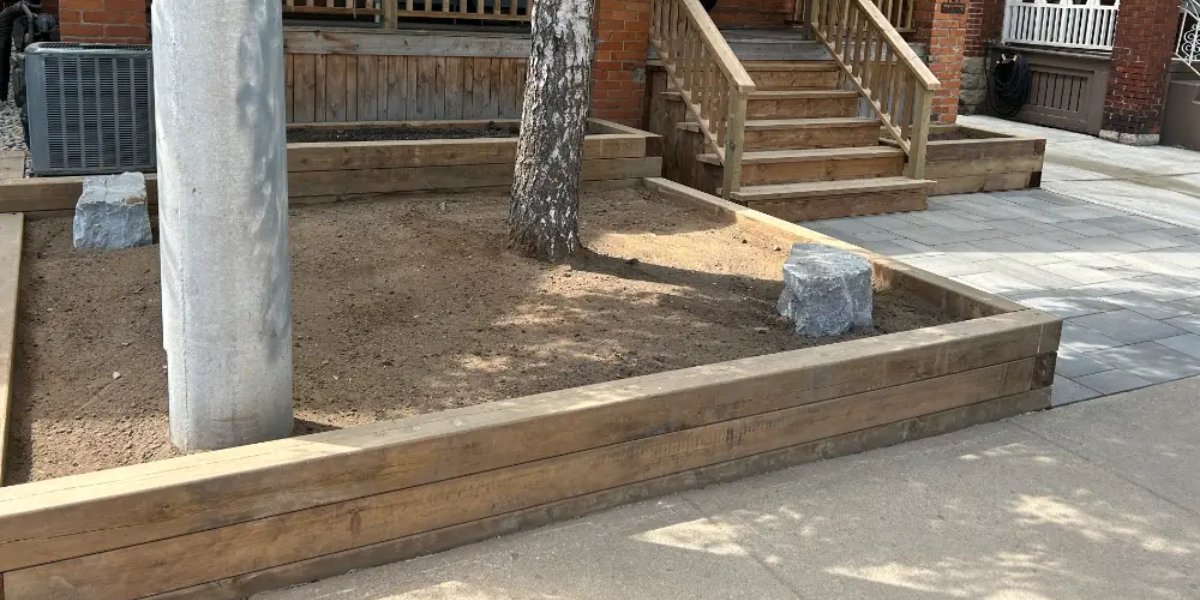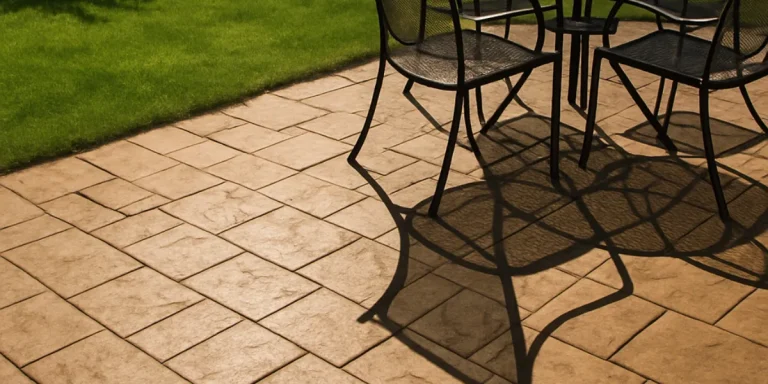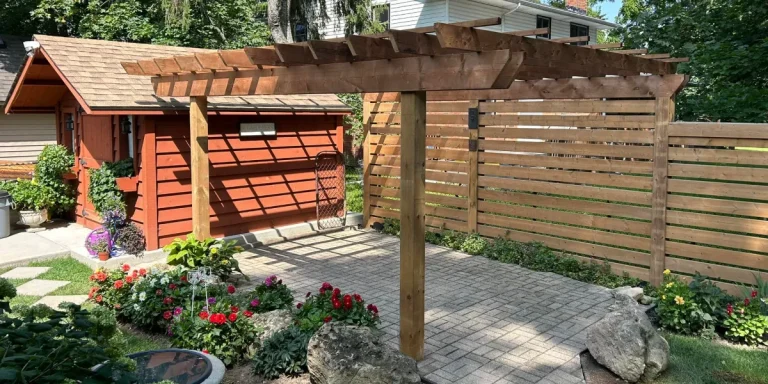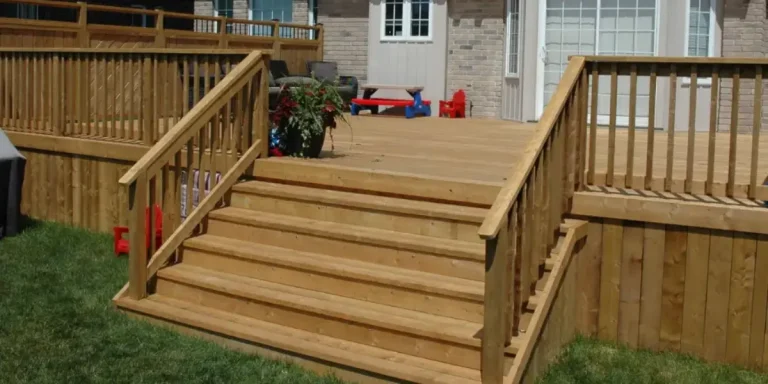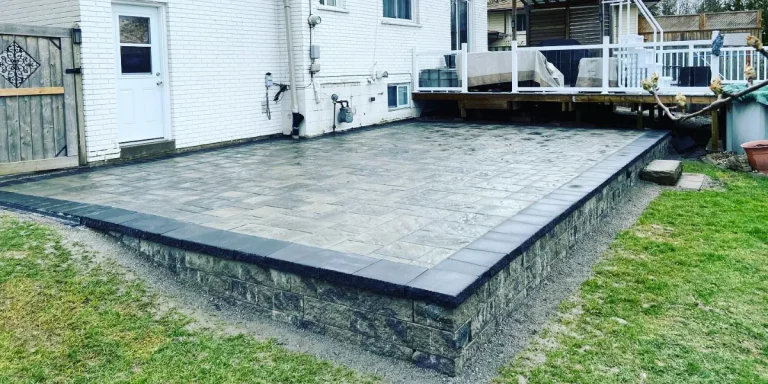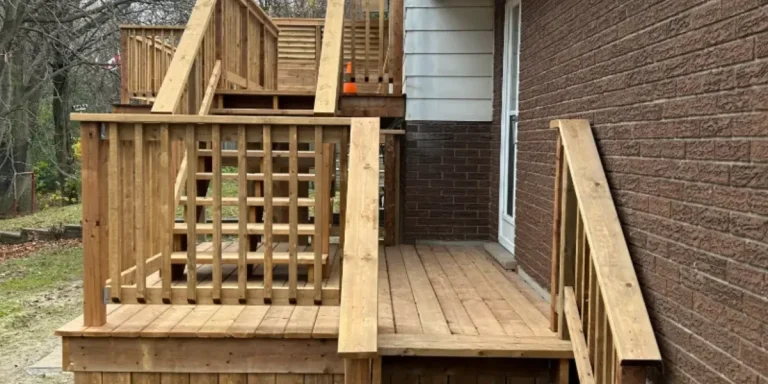Timber vs. Stone: What’s Best for Your Retaining Wall?
If you’re considering a retaining wall for your Hamilton property, one of the first decisions you’ll face is whether to build with timber or stone. Each material offers unique benefits, aesthetic appeal, and lifespan considerations, so choosing the right one depends on your goals, site conditions, and budget.
At Square Leaf Landscaping, we’ve designed and built countless retaining walls for homeowners throughout Southern Ontario. Whether your goal is to manage a slope, prevent erosion, or create terraced gardens, this guide will help you determine whether timber or stone is the right fit for your yard.
Understanding the Role of a Retaining Wall
Before deciding between timber or stone, it’s essential to understand what a retaining wall is designed to do—and why it's such an important feature in many Hamilton-area landscapes.
Retaining walls are more than just attractive landscape elements. They’re functional structures that hold back soil and reshape the terrain to make outdoor spaces safer, more stable, and more usable. Whether you're dealing with a steep backyard in Ancaster or planning a terraced garden in Burlington, retaining walls play a vital role in landscape engineering and design.
Here are some of the most common functions of a retaining wall:
-
- Stabilizing sloped terrain
In many Hamilton neighbourhoods, natural elevation changes or poorly graded lots can create challenges when it comes to landscaping or building patios. Retaining walls create level areas and help prevent soil from sliding or collapsing over time. - Preventing erosion and controlling runoff
Water runoff from rainfall or irrigation can wash away soil, damage plantings, and even compromise nearby foundations. Properly built retaining walls—especially when combined with drainage solutions like French drains—protect against this damage by redirecting water and holding soil in place. - Creating functional outdoor space
By carving flat areas into a sloped yard, retaining walls make it possible to build patios, play areas, seating zones, or raised garden beds where they wouldn't otherwise fit. This is particularly valuable in urban and suburban settings where usable outdoor space is limited. - Adding architectural interest and curb appeal
A well-designed retaining wall isn’t just practical—it also enhances the visual flow of your yard. Whether it’s framing a front garden, dividing elevation changes with terraced levels, or bordering a walkway, retaining walls add structure and style to any outdoor design.
- Stabilizing sloped terrain
While both timber and stone can meet these needs, the right material will depend on several factors, including how tall or load-bearing the wall must be, how visible it is from key areas of your property, and how long you want it to last. Our team at Square Leaf Landscaping considers all of these variables during the design process to ensure your retaining wall performs well and complements the surrounding landscape.
Let us help you make the most of your property by choosing the right material and construction approach for your retaining wall project.
Timber vs. Stone Retaining Walls: Choosing the Right Material for Your Landscape
When planning a retaining wall for your Hamilton-area property, one of the most important decisions is the choice of material. Timber and stone are two of the most popular options, and each offers unique benefits depending on your project goals, budget, and property conditions.
At Square Leaf Landscaping, we help homeowners across Hamilton, Binbrook, Burlington, and surrounding areas make smart choices that lead to long-lasting, functional, and attractive outdoor spaces.
Timber Retaining Walls: Rustic Charm with Budget-Friendly Appeal
Timber retaining walls are typically constructed using pressure-treated lumber. Their natural, earthy look makes them a favorite for informal or rustic landscapes, especially in areas like Waterdown, Ancaster, or rural parts of Hamilton.
Benefits of Timber Retaining Walls:
-
- Lower initial cost compared to stone
- Faster installation, which can reduce labor expenses
- Warm, organic appearance that blends well with garden beds and wooded lots
- Ideal for small-scale projects, such as:
-
- Garden bed borders
- Low retaining walls under 4 feet
- Naturalized seating areas
-
Timber is a practical choice for decorative applications or when working with a modest budget. However, it’s important to understand its limitations—particularly in Hamilton’s wet spring seasons and freeze-thaw winters.
Things to Consider:
-
- Lifespan is typically 10–15 years, even with pressure treatment
- Vulnerable to moisture, rot, and insect activity over time
- Not recommended for taller walls or areas requiring high structural strength
- May require ongoing maintenance, such as sealing or replacing deteriorated boards
Timber works best when used for low-height, non-load-bearing applications where visual softness and affordability matter most.
Stone Retaining Walls: Durability and Elegance That Lasts
For homeowners prioritizing longevity, structural integrity, and refined aesthetics, stone retaining walls are often the better choice. Whether built from interlocking concrete blocks, natural stone, or armour stone, these walls are engineered to perform for decades.
We frequently recommend stone walls for larger projects in Burlington, Oakville, and Stoney Creek—especially where height, slope stabilization, or visual impact are key factors.
Advantages of Stone Retaining Walls:
-
- Exceptional strength for tall or load-bearing walls
- Lifespan of 30 to 50+ years with minimal upkeep
- Highly weather-resistant, especially against freeze-thaw cycles
- Wide variety of finishes and styles to match your property’s aesthetic
-
- Modern modular blocks
- Traditional fieldstone
- Natural armour stone for bold visual appeal
-
- Low maintenance, with no need for staining, sealing, or structural reinforcement
Ideal Uses for Stone:
-
- Terraced landscapes or sloped yards
- Long-term erosion control projects
- Statement features in luxury landscape designs
- Integrated designs with interlocking patios, outdoor kitchens, and garden walls
Though stone has a higher initial cost, it offers significantly greater value over time—both in performance and in property resale potential.
Making the Right Choice for Your Landscape
Choosing between timber and stone for your retaining wall isn’t just about looks—it’s about making the right investment for your property, your budget, and how you plan to use your outdoor space. Each material has its strengths and trade-offs, and the best choice depends on a combination of practical and aesthetic priorities.
Key factors to consider include:
-
- Budget:
Timber is more affordable upfront, making it a popular choice for homeowners looking to stay within a tighter budget or complete a smaller-scale project. However, it may require more frequent maintenance and will likely need replacement sooner. Stone, on the other hand, has a higher initial cost but offers significantly greater value over time due to its longevity and durability. - Aesthetic preferences:
If you're aiming for a natural, woodsy look—particularly in a rural or cottage-style setting—timber may better suit your tastes. For a more polished, elegant, or modern landscape design, stone offers more design flexibility, colour options, and textures that elevate the overall appearance of your yard. - Site conditions:
The topography of your property plays a major role in determining the right material. Steep slopes, poor soil conditions, or high water runoff usually require the strength and stability of stone. Timber can work well for low retaining walls in flat or mildly sloped areas, but it’s less suited to structural applications where significant soil pressure is present. - Maintenance tolerance:
Timber walls often need regular maintenance such as sealing, staining, and occasional board replacement. If you prefer a low-maintenance solution that can stand up to Hamilton’s freeze-thaw cycles, stone is the more hands-off, long-lasting option.
- Budget:
At Square Leaf Landscaping, we evaluate all of these factors during our initial site consultation and planning process. Our team doesn’t just install retaining walls—we provide integrated landscape solutions. We’ll help you select the right materials and design to complement your home, solve grading or erosion issues, and pair seamlessly with surrounding elements like interlocking patios, wood decks, garden beds, or stairs.
By taking a thoughtful, tailored approach, we ensure your retaining wall not only performs its intended function but also becomes a lasting, attractive feature of your outdoor space.
Proudly Serving Hamilton and Surrounding Communities
Square Leaf Landscaping provides expert retaining wall design and construction across:
-
- Hamilton
- Ancaster
- Burlington
- Dundas
- Waterdown
- Aldershot
- Grimsby
- Binbrook
- Oakville
- Stoney Creek
If you’re outside these areas, feel free to contact us—we may still be able to help with your project.
Start Your Retaining Wall Project with Confidence
Let’s build a retaining wall that works for your space—and lasts.
Whether you’re leaning toward timber or stone, the team at Square Leaf Landscaping will help you make the right decision for your landscape. Contact us today to request a free consultation or quote. We’ll assess your property, explain your options, and deliver a high-quality retaining wall that improves both the form and function of your outdoor space.

